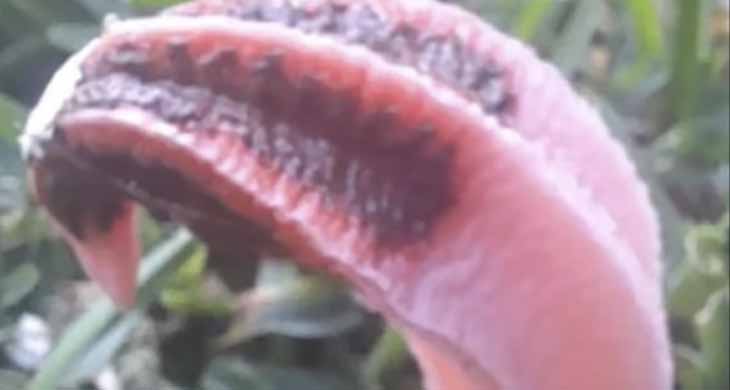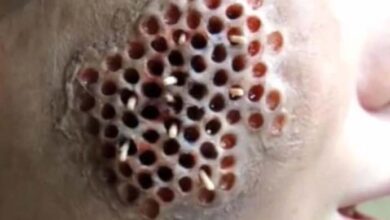Woman Is Desperate To Learn What This “Horrible Smelling” Thing Growing In Her Yard Is

In an unexpected and fascinating encounter with nature, a woman from Gladstone, Queensland, has excitedly shared her discovery of a peculiar and pungent growth in her backyard. The local resident took to Facebook to showcase images of a unique pink and brown plant resembling tentacles, captivating online audiences with its intriguing appearance.
The plant in question, bent over and growing sideways with a distinctive white spot on its top, immediately sparked curiosity. The woman shared her enthusiasm, stating, “I wanted to share my first awesome fungi find in my backyard. From my understanding, it’s a Lantern Stinkhorn. I’ve never seen one in person yet, so it was very cool to find it in my lawn this morning.”
Accompanying the images of this peculiar find was the revelation that, despite being odorless when first discovered, the plant had since emitted an unpleasant smell akin to “fresh dog poo.” This aromatic phenomenon raised questions about the plant’s nature and purpose, leading experts to weigh in on its peculiar traits.
Known as the Lantern Stinkhorn, this enigmatic growth also goes by the names “small lizard’s claw” and “ribbed lizard claw fungus.” Typically found in urban settings such as gardens, this plant is far more than meets the eye. According to Professor Dee Carter, an expert in Microbiology at the University of Sydney, the strong and unpleasant smell it releases serves a specific purpose.
“The strong unpleasant smell is actually to attract flies in order to spread their spores,” Professor Carter explained. As the Lantern Stinkhorn matures, it produces a brown substance that sticks to the feet of flies, aiding in the dispersal of spores. This mechanism highlights the intricate relationships that exist within ecosystems, where even the most repugnant of scents play a critical role in nature’s grand design.
Despite their rather unsettling appearance, Lantern Stinkhorns are not harmful. Professor Carter clarified that these fungi are not poisonous and, in fact, can be beneficial as nutrient recyclers. However, she recommended exercising caution with pets around them, given their unfamiliarity.
The rapid growth and decay of Lantern Stinkhorns are notable features. These fungi can seemingly appear overnight, earning them the phrase “here today, gone tomorrow.” The fleeting nature of their presence contributes to their air of mystery, leaving a lasting impression on those fortunate enough to witness their brief appearance.
Interestingly, Lantern Stinkhorns are often introduced to gardens via wood mulch and typically thrive on decomposing organic matter. This scavenging behavior underscores their valuable role in nutrient cycling within ecosystems.
As news of this unusual discovery spread, social media users reacted with a mix of curiosity and awe. Comments ranged from expressing discomfort with the plant’s appearance to praising the woman’s exciting find. While some admitted to being unnerved by the plant’s appearance, others were fascinated by its unique characteristics.
In a world where the wonders of nature continue to surprise and captivate, the discovery of this intriguing fungus serves as a reminder of the hidden marvels that can be found in our own backyards. The Lantern Stinkhorn’s ability to attract flies with its unappealing scent, its rapid growth and decay, and its unexpected presence exemplify the intricate dance of life that unfolds in even the most unexpected corners of our world.




